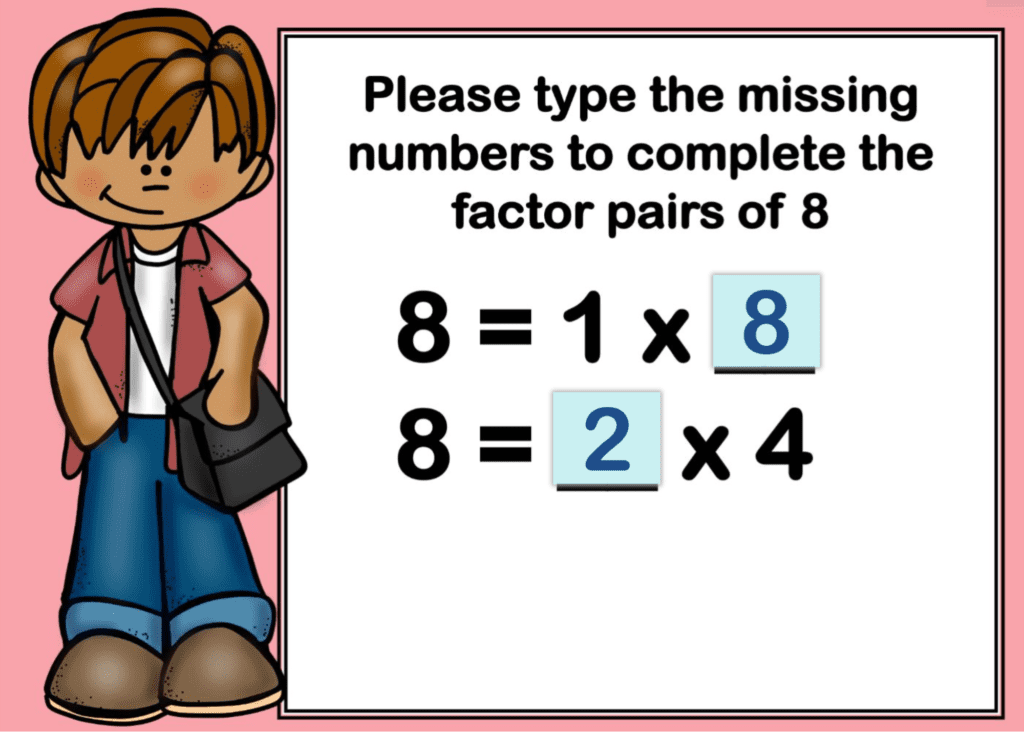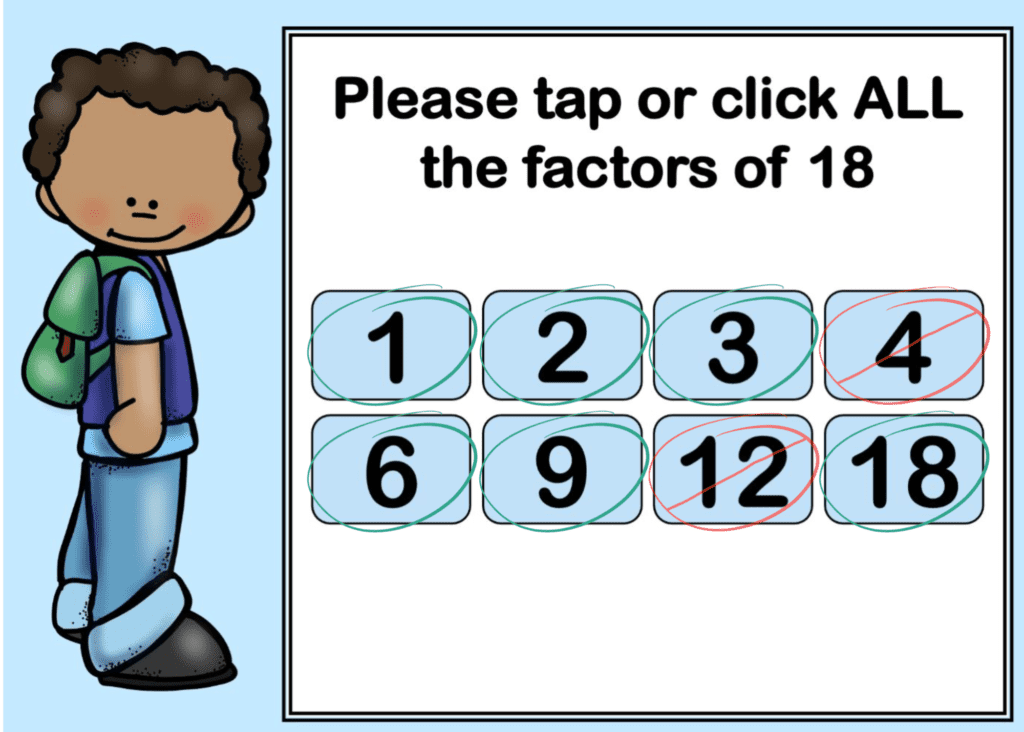Teaching factors and factor pairs can be challenging for teachers to teach and students to learn. I find it helpful to break the steps into smaller pieces that are easier for students to master.
I enjoy resources that are differentiated and scaffolded. This means students start with easier questions then move to more challenging questions as they gain confidence.
It’s also really helpful if the resources are self-correcting so students can learn from their mistakes. This also saves a ton of time grading and is super helpful when tracking student data.
If your students need more practice with their multiplication facts, it might be helpful to have them practice with these Multiplication Fact Fluency Boom Cards beforehand. These decks of Boom Cards can be used over and over again until your students feel confident with the their multiplication facts.
For this particular deck of Boom cards on factors and factor pairs, there are 3 levels each with 12 questions. Students either type or click the answers so they’re interactive. The questions also increase in difficulty so students can gain confidence as they practice more questions.
Level 1 Questions with a Pink Background
For the first 12 questions, students are asked to type the missing number to complete the factor pairs of a given number. Students complete either 2, 3, 4, and 5 factor pairs for each number. This is super helpful for students because they make the connection that a factor is a number that you can multiply with another number to get a product.
They also gain a better understanding of factor pairs. For example, with this Boom card shown on the right, 2 and 4 are factor pairs for 8.
Level 2 Questions with a Blue Background
For the next 12 questions, students are asked to click or tap the factors of a given number. Questions have from 3 factors to 8 factors. The numbers are listed in order from smallest to largest to prepare students for finding common factors and greatest common factor.
For these questions, I have students always start with 1 and then find the factor pair which is 18 in this case. They can then decide if the next number is a factor. In this example, 2 is also a factor so they can select that as well as its factor pair of 9. Then they would finally decide if 3 is a factor, select it, then also select the factor pair of 6. I love that these are self correcting so students can see which ones they have missed and can make the appropriate corrections.
Level 3 Questions with a Green Background
For the last 12 questions, students are asked to type all the missing factors of a number. Numbers are listed from smallest to largest.
For example, the factors of 66 are 1, 2, 3, 6, 11, 22, 33, and 66. Most of the numbers are filled in but they would need to type the 2, 22, and 66.
Again, I’d have them start with 1 and type its factor pair of 66. Then they can see that 33 is typed so the factor pair of that is 2. It’s like a puzzle for them to figure out the missing factors.
Having students see the factors in order from smallest numbers to largest numbers is important. They’ll need this skill when they are finding common factors and greatest common factor.
What Grades Would These Boom Cards Be Helpful For?
These cards are aligned to the common core 4.OA.B.4 and 6.NS.B.4 so they would be appropriate for both 4th graders and 6th graders. It’s especially helpful to review factors for 6th graders before they work on Greatest Common Factor.
What Do All the Cards Look Like?
To get a better feel of what the cards look like, check out this helpful video preview of the cards. You’ll get a good idea of the difficulty of the questions. You will also be able to see how the questions progress from easy to more challenging questions.
I really love using Boom cards because they are great on a laptop, desktop, Chromebook, tablet, or any other mobile device that can access the internet. They can even be used on your Smart Board. Here’s the best part – they are self-grading and allow you to track student progress. Plus, they’re no prep which means no printing, laminating, or storage.
If you are new to using Boom Cards, check out this post on 6 Reasons to Use Boom cards in Your Classroom. You might also be interested in creating your own Boom cards for your students or to earn extra income selling them. Check out this post on Creating Boom Cards.




